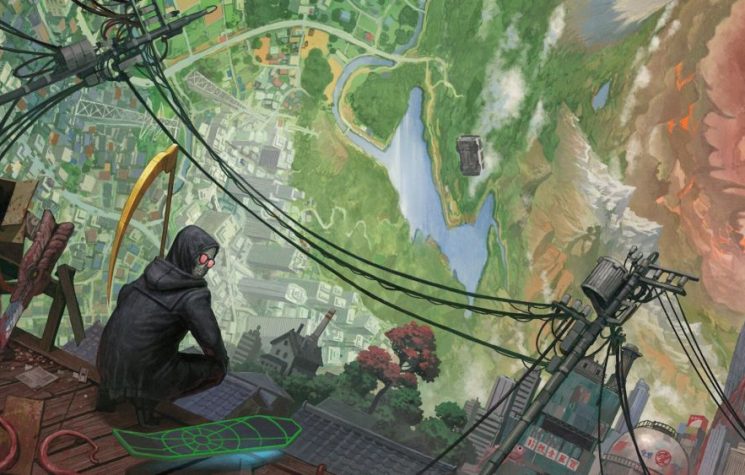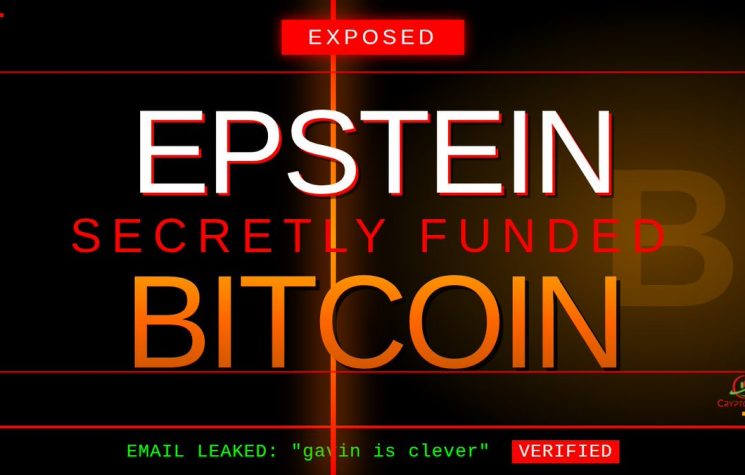The coming phase will involve the division of the awakened through the manipulation of trauma-bonding, empathy attachment, and altruism, Joaquin Flores writes.
The new social credit system uses weaponised sociology and mass psychology such that the plutocratic ruling class can transform, with little disruption normally associated with the rotation of elites, into a post-financial technocracy. Therefore, the old social credit system of consumer credit, and likewise systems of law, become moribund. They are replaced by revolutionary methods of social control which a.) uses a sinister trauma-bonded ‘empathic-intuition’ method, at the individual level, b.) alongside pre-crime and permanent guilt as a systemic foundation, c.) and the loss of the 6th Amendment’s guarantee to know the crimes (and evidence) one is accused of.
While the concerned public is familiar with the material technologies in plans of technocrats through various leaked documents, the exposure of summits and societies dedicated to this nefarious cause, the dark anti-human agenda that guides these goes even beyond the understanding of the well-informed.
At face value, social credit is marked by the imposition of a deviant libertine values system of the ruling class, upon the whole society. Secondly, as it is well-known, it micromanages individual’s goods and energy consumption.
In this chapter, we will examine the apocalyptic manipulation of the sociological and social-psychological technologies from several French poststructuralist schools including Foucauldian theories on pain and control, Baudrillardian conceptions of simulacrum and hyper-reality, Kafka’s works of ‘fiction’, taken together with Critical Theory (Frankfurt School) analysis in the vain of neo-Marxian historical materialism, and neo-Freudian psychoanalysis, informed also by Jean-Martin Charcot’s theory of trauma.
Our conception of a panopticon prison does not lay the foundation for the medical-technocratic quarantine as house arrest: Rather, as Foucault discovered, the 17th century practice of quarantining during a pandemic lays at the foundation of the modern panopticon prison grid for all of society – a tyrant’s fantasy realized.
The social philosophers (Michel Foucault, Jean Baudrillard, Jurgen Habermas, etc.) likely believed they were developing ideas to help mankind, much like Marx and the original Marxists themselves.
Paradoxically they only better described the elite-ruled world in a more scientific fashion than the elites themselves had previously understood it, making the elite’s managerial class all the better armed. Because these ideas were limited to the university curriculum, where future managers and technocrats are educated, this outcome was already predicted.
The themes of the elite’s dystopic proposal for the coming epoch are: inauthentic virtue, compliance with hidden rules, permanent guilt, internalized control, trauma-bonded ‘empathy’, population reduction, and austerity.
The coming phase will involve the division of the awakened through the manipulation of trauma-bonding, empathy attachment, and altruism, as inferred through the work of Jeremy Rifkin, author of the ‘Empathic Civilization‘ and the ‘Third Industrial Revolution’. And contrary to what were perhaps Rifkin’s own well-intended hopes for humanity, the neutral, technical, scientific component of his work greatly informs the managers of the resetist technocracy.
It is here that the elites will attempt to confront the Great Awakening through dark-side psycho-spiritual warfare parading as awakened. It will manipulate paranoia on ‘Narcissism‘ and accuse all those who resist the technocracy, as narcissists
Social credit is based on an inversion of concepts of good, of innocent, and of guilty. In the new social credit system, one is assumed guilty until they can prove they are going in the direction of ‘good’, and no one is innocent and no one really achieves full approval (i.e. goodness). This mirrors the Covid-19 pandemic that introduced the new normal of being assumed sick unless one can prove ‘health’ (though still contagious, i.e., never really ‘good’) through forced ‘inoculation’.
It is also a theme in ‘white guilt’ where every ‘white’ individual, regardless of facts, is personally responsible for institutional slavery (a contradiction in terms), publicly humiliated, until they perform certain ritualized tasks (“to actively use their privilege to dismantle white privilege and white supremacy”), and utter particular shibboleths, as proscribed by a technocratic managerial priesthood of the church of shame and new beginnings. This ‘Critical Race Theory’ (CRT) is a subdivision of Critical Theory itself.

The Revolution Eats its Own – Public humiliation of class enemies – mostly older-generation Communists themselves – during the Cultural Revolution, China 1960s
The 4th Industrial Revolution Requires Social Credit
The 4th Industrial Revolution requires the new social credit as it no longer uses money in a recognizable way. Fines and imprisonment were historically used to dissuade barred activities, both of which represent a loss of time and social standing. Losing social credit points and requirements to perform tasks or maintain improved behaviour over time, to earn points back, also reflects a loss of time, labour, and social standing.
During the 2nd and 3rd Industrial Revolutions, consumer credit as a FICO score, the Curriculum Vitae, personal income level, renown, and the criminal record combined to form the social credit system of those eras.
Imprisonment is no longer necessary with a surveillance grid, or rather, everyone is imprisoned. CVs and consumer credit become irrelevant as work is replaced by automation.
Still, we should expect ‘prisons’ in the sense of internment camps, which have already been constructed, as the dichotomy of imprisoned vs. non-imprisoned reinforces the simulacrum of relative freedom/privilege for the non-interned.
Imprisonment and punishment go even further with the new social credit, and in the absence of financial losses, involve a deeper public shaming, taking cues from Foucault’s analysis of the origins of prison and the internalization of pain and guilt.
Just as with ‘home quarantining’ enforced by neighbors, police, and tracking via smart phones (later to be implanted devices, ankle bracelets, etc.), the creation of a surveillance grid eliminates the distinction between imprisonment and ‘freeness’, outside of internment camps. Foucault’s work ‘Discipline and Punish: The Birth of Prison’ forms the foundational theory of the coercive part, the largest part, of the new social credit system in particular on his study of the Panopticon. This work builds upon Nietzsche’s ‘Genealogy of Morals’ and ‘The Anti-Christ’ from a hundred years before, and delves deep into the motives behind punishment and virtue-projection in society.

An old-style panopticon prison model, now superseded by the virtualization of the watch tower into individual dwellings via ‘Alexa’, track-and-trace, and ID2020
It Must be Painful and Humiliating
Indeed the Great Reset depends upon a transvaluation of all values (Umwertung aller Werte).
Of particular interest is a view on the satisfaction drawn from observing the pain inflicted on the guilty, which can transcend punitive justice (as corrective justice) and yet also goes beyond the reprieve, schadenfreude, and solace that harmed parties and society obtains through the process of justice. It exposes that the new system is pure sadism, like that of the torturer who loves his work. This also explains the rationale of the alien values system being used.
The biggest evidence of the malicious intent and ritualized abuse built-in to the new social credit system, is its broadly coercive nature – primarily the imposition of unpopular views as the basis of the new ‘virtue’. Why do we say this?
A benign algorithmic technocracy encounters no obstacle in assessing the mainstream views of society, as such are known already through Facebook’s analysis of social attitudes, which the Trump campaign purchased to create the perfect populist campaign in 2016. This means that punitive justice itself would not be necessary for the masses, since norms by definition are popular and pervasive.
Therefore, to maximize the infliction of pain and to justify a system of mass imprisonment on a ‘social grid’ means an anti-popular, minoritarian-derived conception of values are preferenced.
But evil is based in power-over, not consent (i.e. freedom as power-with, ), and the best way to ensure that it is a particularly twisted conception of power, as a fetishized and ritualized sadism, is to use the most repulsive and anti-human ‘values’ system as the foundation.
The problem is that in a universalized, top-down, centralized system, a consent-driven values systems cannot be represented. Local and decentralized systems are compatible with consent-driven practices of power. This view was foundational in 19th century liberal thinking, as with John Stuart Mill’s ‘Experiments in Living’, and before this is reflected in the U.S. Constitution with its devolution of powers to states which can derive legislation reflective of the real-existing values of the state’s citizens.
It is here that we find the biggest problem: the extreme libertine values being mismatched to paradigm. Given that the majority of Americans are considered socially conservative, the elites having landed on an authoritarian new left value system provokes tremendous opposition.
For that reason, it is useful to conceptualize libertine values as not only minoritarian, but socially deviant, and of the ruling class. Along with this deviance, is the fetishization and ritualization of its process. Therefore, rather than seeing social division along a left vs. right axis, it is more accurate to view the division as top vs. bottom, where the ruling class at the top only creates the simulacrum of popular ‘left’ support.
Kafka’s Community Standards vs. Tribal Society
What we are seeing with the ruling class is the intentional imposition of anti-social, anti-human, unpopular views.
Commonly, a person lacking in virtue has not broken the law, but we perceive these as two separate categories because ‘civilizations of scale’, with its anonymity give rise to this bifurcation.
Tribal and small-scale societies, just like close-knit communities today, also held a lower distinction between lawfulness and virtue. Rather than two distinct categories, these can better be envisioned on a customs based spectrum of community standards, ranging from unacceptable, acceptable, preferable, and honored.
But the elite’s version of social credit is a disastrous implementation of this ancient way. Social credit functions justly at the local, grass-roots level, where customs on norms and deviance are derived by consent, and passed organically from one generation to the next. They are well-matched for the paradigm they situate in. This is why our central thesis has focused on an alternative, decentralized 4IR and IoT controlled at the grass roots levels by the communities it serves – a type of archeofuturism.
The precise rules of the ‘game’ of living in society must be spelled out clearly. We can see the Kafkaesque ‘social credit’ and ‘community standards’ – they are never specified in a meaningful way. If they were to be specified, applicability could be argued. If they can be argued, it opens up the door to the demand that an appeals system, or adversarial legal system, be in place.
Social credit erases distinctions between lawfulness and virtue, and between rights and privileges. We have seen this already with the intentional conflation of rights and privileges from ‘health experts’ like CNN’s Leana Wen who are promoting the Covid19 resetism and its forced vaccination program.

The new technocracy does away with an adversarial legal system, the publishing of laws, and other such extravagant developments since Hammurabi 3800 years ago.
What’s more, the ruling class has intentionally done bad sociology in conflating the values system of a civilization in decay and decline, for being the values system which bridges us to the (4IR) of the future – a ‘hard problem’ confronting their Marxian analysis. In reality, this is a case of mismatching values to paradigm.
We erroneously think of social credit as a system that will be rolled out in one fell swoop, at a future day, with a clearly defined points system. There won’t be.
The corporatization of the public sphere has led to the ‘community guidelines’ rationale for censorship.
These community guidelines are never specified in relation to a ‘strike’. This renders the invisible ‘appeals’ process into superficial exercise of groveling to satiate an unknowable god.
Content creators already censor themselves in this privatized public square, where speech rights do not exist.
Employers have for some time perused the social media of applicants, looking for opinions and activities that are unwelcome.
In Australia and New Zealand, police come knocking on doors – even making arrests – for posts made on social media. This collaboration of law enforcement and social media is disastrous. Before long, it will be law enforcement making arrests over the (undisclosed) community guidelines violations.
The justified resistance to the coming social credit system that is already here, is therefore easy to explain.
Modernity is associated also with the overthrow of the landed aristocracy, and the rise of a financialist plutocracy alongside a class of industrialists, during the 1st Industrial Revolution. City-states since the dawn of civilization such as Babylon, with their scale and anonymity, were where ‘lowest common denominator’ behaviour was the law. Various forms of corrupted ‘good-standing’ behaviour, the origin of virtue signaling, was endorsed and de facto enforced. The idea of victimless crimes emerged, as well as the creation of two categories, malum in se (real moral crimes) and malum prohibitum (technical violations).
This meant that the appearance of good standing could be purchased through show-boat philanthropy, but also the laws themselves could be wantonly violated through the paying of bribes.
Societies of scale have effectively justified and encouraged this type of social credit system, which works as a type of stratified class system: rules for thee but not for me. We see this today with the masking system.

The new two-class system – sickly silenced and virtuous rulers – Arturo Holmes/MG21/Getty Images
Taken all together, we can say conclusively that the coming social credit system is based upon a technocracy which has legalized its own real moral crimes, and regulates the rest of society through technical violations, both parading as – and internalized at the individual level – legal-moral failings and perpetual guilt. It represents a ‘reset’ not merely of or within industrial ages, but stealthily imports pre-civilizational methods of social regulation which erase certain distinctions that arose in civilization and were reinforced by modernity, combined with the loss of an adversarial justice system without a 6th Amendment. All of this goes towards something never before seen, a post-civilizational model in which humanity is abolished.












































